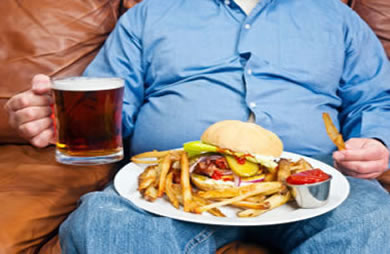Love hormone play role in social interaction

A special type of social behavior tied to the presence of oxytocin receptors in the nucleus accumbens
Researchers at the Stanford University School of Medicine have shown that oxytocin – often referred to as “the love hormone” because of its importance in the formation and maintenance of strong mother-child and sexual attachments – is involved in a broader range of social interactions than previously understood.
The discovery may have implications for neurological disorders such as autism, as well as for scientific conceptions of our evolutionary heritage.
Scientists estimate that the advent of social living preceded the emergence of pair living by 35 million years. The new study suggests that oxytocin’s role in one-on-one bonding probably evolved from an existing, broader affinity for group living.
Oxytocin is the focus of intense scrutiny for its apparent roles in establishing trust between people, and has been administered to children with autism spectrum disorders in clinical trials. The new study, to be published Sept. 12 in Nature, pinpoints a unique way in which oxytocin alters activity in a part of the brain that is crucial to experiencing the pleasant sensation neuroscientists call “reward.” The findings not only provide validity for ongoing trials of oxytocin in autistic patients, but also suggest possible new treatments for neuropsychiatric conditions in which social activity is impaired.
“People with autism-spectrum disorders may not experience the normal reward the rest of us all get from being with our friends,” said Robert Malenka, MD, PhD, the study’s senior author. “For them, social interactions can be downright painful. So we asked, what in the brain makes you enjoy hanging out with your buddies?”
Some genetic evidence suggests the awkward social interaction that is a hallmark of autism-spectrum disorders may be at least in part oxytocin-related. Certain variations in the gene that encodes the oxytocin receptor – a cell-surface protein that senses the substance’s presence – are associated with increased autism risk.
Malenka, the Nancy Friend Pritzker Professor in Psychiatry and Behavioral Sciences, has spent the better part of two decades studying the reward system – a network of interconnected brain regions responsible for our sensation of pleasure in response to a variety of activities such as finding or eating food when we’re hungry, sleeping when we’re tired, having sex or acquiring a mate, or, in a pathological twist, taking addictive drugs. The reward system has evolved to reinforce behaviors that promote our survival, he said.
For this study, Malenka and lead author Gül Dölen, MD, PhD, a postdoctoral scholar in his group with over 10 years of autism-research expertise, teamed up to untangle the complicated neurophysiological underpinnings of oxytocin’s role in social interactions. They focused on biochemical events taking place in a brain region called the nucleus accumbens, known for its centrality to the reward system.
In the 1970s, biologists learned that in prairie voles, which mate for life, the nucleus accumbens is replete with oxytocin receptors. Disrupting the binding of oxytocin to these receptors impaired prairie voles’ monogamous behavior. In many other species that are not monogamous by nature, such as mountain voles and common mice, the nucleus accumbens appeared to lack those receptors.
“From this observation sprang a dogma that pair bonding is a special type of social behavior tied to the presence of oxytocin receptors in the nucleus accumbens. But what’s driving the more common group behaviors that all mammals engage in – cooperation, altruism or just playing around – remained mysterious, since these oxytocin receptors were supposedly absent in the nucleus accumbens of most social animals,” said Dölen.
For more : medical news today











 Re
Re A new study by Indian origin researcher has suggested that diabetic people have a 30 percent less chance of dying if they undergo coronary artery bypass surgery rather than opening the artery through angioplasty and inserting a stent.
A new study by Indian origin researcher has suggested that diabetic people have a 30 percent less chance of dying if they undergo coronary artery bypass surgery rather than opening the artery through angioplasty and inserting a stent.

 Women of different age groups on Sunday morning put on their running shoes and joined the ‘Pinkathon’ to create awareness about breast cancer.
Women of different age groups on Sunday morning put on their running shoes and joined the ‘Pinkathon’ to create awareness about breast cancer.
 It is a well documented fact that an association exists between breakfast and weight management, however a new study has found that previous researchers designed to find links between these two things often do not prove that one causes the other.
It is a well documented fact that an association exists between breakfast and weight management, however a new study has found that previous researchers designed to find links between these two things often do not prove that one causes the other.